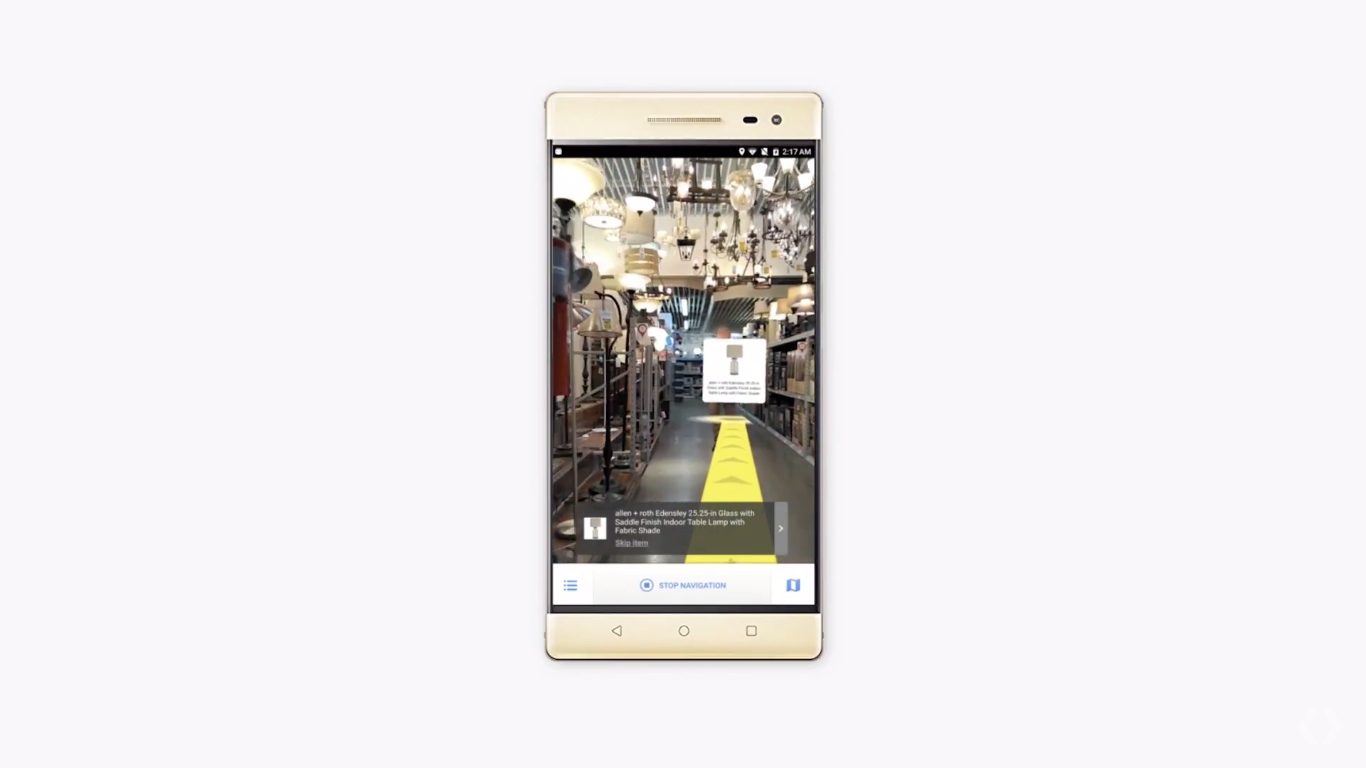At today’s annual Google I/O developer conference, Clay Bavor, VP of Virtual Reality at Google, announced a new augmented reality service called Visual Positioning Service, the latest development for the Tango platform that promises to not only precisely map the world around you in concert with Google Maps, but also give you a ‘GPS-like’ turn-by-turn navigational experience when you’re indoors. In addition, he announced an AR mode for an upcoming educational tool called Google Expeditions.
Following some major VR announcements including Daydream-compatible standalone VR headsets in the works from HTC and Lenovo, Bavor moved on to Google’s AR operations, confirming that the Asus Zenfone AR, the second Tango-enabled consumer smartphone, is still on track for a summer 2017 launch.
Google Tango is a smartphone-based AR platform that has the ability to map the world around you in real-time using a number of on-board sensors and the phone’s camera.

The Visual Positioning Service (VPS) revealed on stage, which combines Tango’s inside-out tracking system with Google Maps, provides “very precise location information indoors,” claims Bavor. As an example, Bavor described looking for a specific screwdriver at a Lowe’s home improvement store. Holding up a VPS-enabled phone inside the store will allow the system to know exactly where you are “within a few centimetres”, and will be able to direct you (based on previous collected data) to the exact tool you were searching for, sort of like an in-door GPS complete with turn-by-turn directions.
Google says VPS works today in partner museums and select Lowe’s stores.

In other words, “GPS can get you to the door, VPS can get you the exact item”. In the future, VPS combined with an audio interface could transform the way visually-impaired people move around the world. It will also be “one of the core capabilities of Google Lens”—a new image recognition initiative also announced today.
Finally, Bavor announced AR is being added to Google Expeditions, the popular ‘virtual field trip’ tool for education. Introduced two years ago for the inexpensive Cardboard VR headset, Expeditions has since been used by 2 million students. The new AR mode, demonstrated on video in a classroom with students holding several Zenfone ARs on selfie sticks, was described as “the ultimate show and tell.” The Expeditions AR mode will be added later this year.






